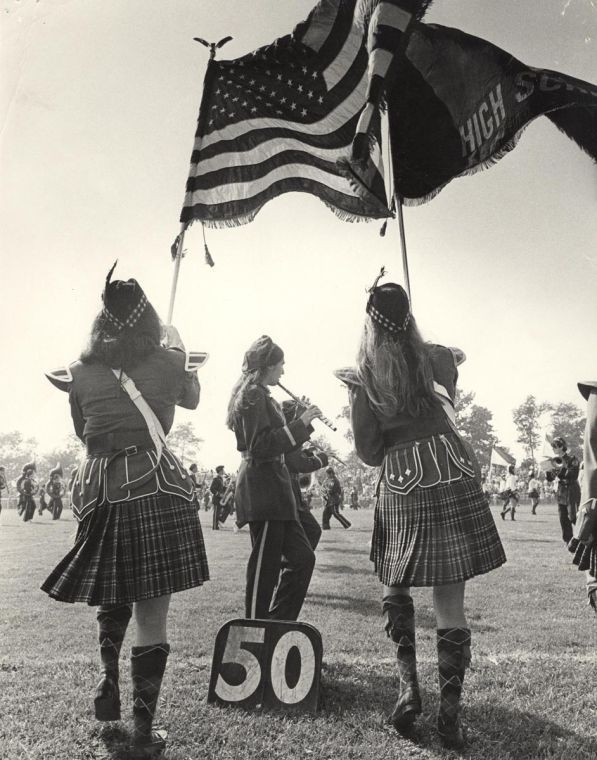As schools reopened for classes this week, the Herricks School District marked the beginning of an important milestone – its 200th school year.
The school district traces its roots back to Aug. 9, 1813 when Herricks was one of 11 school districts formally defined by the newly formed Commissioners of Schools in the Town of North Hempstead, according to Hempstead town records.
The district, which was named after Herricks Path, a thoroughfare that existed in the area since 1659, was the 10th district formed by the commissioners.
Herricks Superintendent of Schools John Bierwirth said the district’s history will be part of the curriculum being developed for different grade levels this year.
“I hope that some of the things we will do over the next year will help bring history alive for our students,” Bierwirth said. “Far too many texts take all the fun out of history. I find many to be incredibly boring. As a history major and as one who has continued to read and study history as an adult, it is the people and their stories that are interesting. I hope that we can help students and maybe some of their families gain a better understanding of this area and Long Island for at least the past 200 years if not longer.”
Herricks Board of Education President Jim Gounaris said he is proud to be the board president as the district observes its bicentennial.
“How moving it is to be the president of an exceptional school district whose dynamic and forward thinking populace always found a way to broaden the spectrum of education for each generation,” Gounaris said.
At the time the Herricks district was created, the geographical boundaries of school districts were delineated in relation to the boundary lines of farms in what was then an agricultural area. So the eastern boundary of the Herricks district was “one rod east of Jonas Denton’s,” according to town records maintained by the North Hempstead Town Clerk.
An 1859 map showed Herricks on the boundary of the Searing and Willis farms.
The formation of school districts in Nassau County followed a New York State statute passed in 1812 authorizing the establishment of common school districts throughout the state. A state law in 1814 required the formation of school districts.
There also were districts formed in Searingtown, Great Neck and Plandome, which correspond to the contemporary locations of those municipalities, according to town records.
A report from the Superintendent of Common Schools of the Town of North Hempstead from November 1850 said teachers wages in the district in 1843 were $200, with overall maintenance of the district costing $243.
By 1898, Herricks still had one of the county’s last one-room schools, according to Wikipedia.
Construction of the Herricks Community Center was originally funded as the new high school and junior high in 1941 at a cost of $598,000, according to a public letter written by then – president of the Herricks Board of Education G. Arthur Roland.
Roland noted at the time that before amortization of the bond would begin in 1943, bond indebtedness of the school district would drop by $9,000 with $5,000 in bonds maturing from the Herricks School Building constructed in 1925 and $4,000 for the purchase of additional land in 1937.
The land Herricks High School currently occupies was known as Watermelon Hill. The land was originally a burial ground in the 17th century for a farming family called the Pearsalls. The burial ground was later removed, according to Wikipedia.
The high school opened in 1958 and graduated its first class in 1960.
In the modern era, the Herricks School District figured prominently in the issue of prayer in schools when a 1962 Supreme Court ruling in the case of Engel v. Vitale decreed that government-written prayers were not to be recited in public schools and were unconstitutional.
The case was brought by a group of Jewish families in New Hyde Park who said a voluntary prayer written to “Almighty God” by the state board of regents violated their religious beliefs.
The Supreme Court’s ruling on the case referred to one of the country’s founding principles of religious freedom – a principle that was familiar to the early settlers in the area even before the U.S. Constitution was written.
“I hope that we can help students and maybe some of their families gain a better understanding of this area and Long Island for at least the past 200 years if not longer,” Bierwirth said.
The earliest historical reference to Herricks was in Town of North and what was then South Hempstead records of March 24, 1659, when Symon Searing, one of the area’s first settlers, bought “an acre of land – boundaries ye west side of Herricks Path.”
In 1679, records indicate Rev. Samuel Denton bought 22 acres from William Thickstone of Hempstead, described as “a woodland called Herricks.”
The Herricks name is apparently also derived from one of the area’s earliest settlers, but the earliest record of family members is in township records of 1845 and 1848, when Jonathan K. Herrick and Charles Herrick bought more land in the area.
The names of farmers including I.U. Willets, William Willis and Jacob Albertson also survive in the names of contemporary geography.
One aspect of their legacy disappeared long ago.
School attendance records of the 19th century identify colored children with the last names of the landowners. Their separate listing from other children suggests they were the children of slaves on the farmers’ estates.



